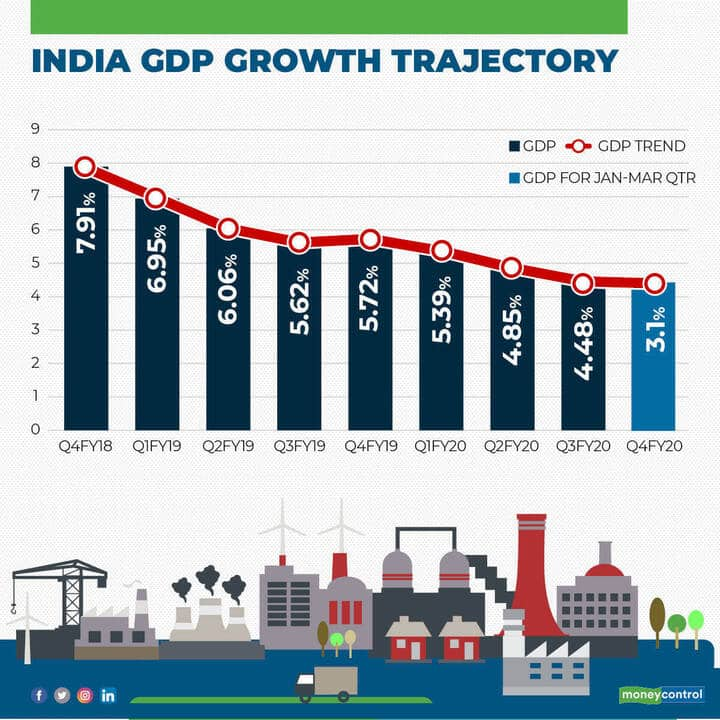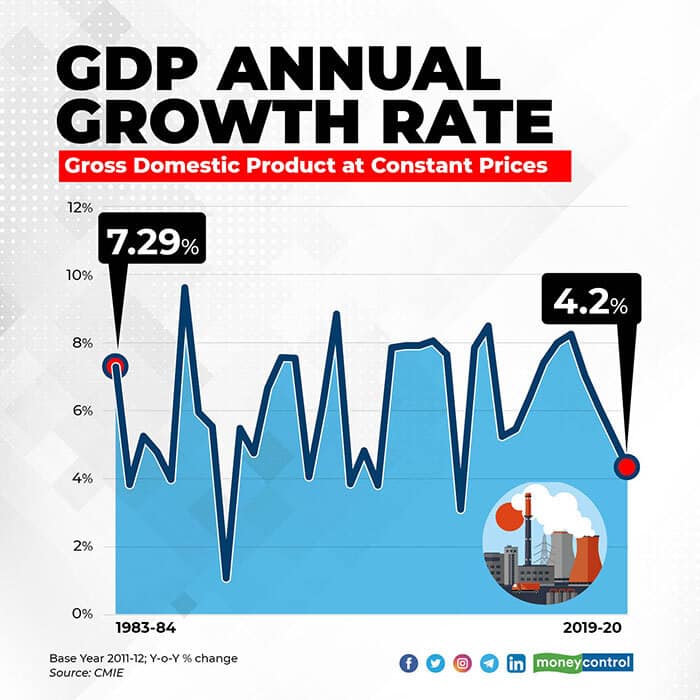India's gross domestic product (GDP) grew 3.1 percent during January-March this year, as the COVID-19 induced disruptions appeared to have devastated the broader economy, pummelled by collapsing household spending and shuttered businesses that are battling to stay afloat, data released by the government showed.
Government data showed that the GDP growth for the financial year 2019-2020 stands at 4.2 percent, compared to a 6.1 percent growth in FY19. The full-year GDP growth figure takes into account revisions to data for the past three quarters.
The growth for the April-June quarter of 2019-20 has been revised to 5.2 percent, compared to 5.6 percent earlier. The July-September quarter growth figure has been revised to 4.4 percent from 5.1 percent earlier, and that for the third quarter has been revised to 4.1 percent from 4.7 percent earlier.

In 2019-20, nominal GDP growth fell to 7.2 percent against 11 percent in 2018-19.
Gross fixed capital formation, which is an indicator of the level of investments in the country, saw yet another quarter of contraction in Q4. Gross fixed capital formation contracted by 6.5 percent in Q4, after a 5.2 percent contraction in Q3. For the full year, it contracted by 2.8 percent, compared to a growth of 9.8 percent in the previous year.

The private final consumption expenditure (PFCE) grew by 2.7 percent during the quarter compared to a 6.6 percent growth in Q3. The full-year private consumption growth fell sharply to 5.3 percent, against a 7.15 percent growth seen in FY19.
Growth in the agriculture sector was seen at 5.9 percent in Q4, against a growth of 3.6 percent in the third quarter, and grew 4 percent for the full year.
Mining sector growth stood at 5.2 percent for Q4 and at 3.1 percent for the whole year. The manufacturing sector contracted 1.4 percent in January-March 2020 and grew by 0.03 percent for the full year FY20.
The financial services sector grew by 2.4 percent in Q4 and by 4.6 percent in FY20. The construction sector also contracted by 2.2 percent in the last quarter of FY20 and grew by 1.3 percent for the full year. Trade, hotels, transport and communication growth came in at 2.6 percent in Q4 and at 3.6 percent for FY20.
Factory output measured by the index of industrial production (IIP) contracted 16 percent 2020. This shows declining momentum of both investment and consumption. Even core industries productions of steel, electricity, coal and cement are falling or have been stagnant in recent quarters.
Discover the latest business news, Sensex, and Nifty updates. Obtain Personal Finance insights, tax queries, and expert opinions on Moneycontrol or download the Moneycontrol App to stay updated!